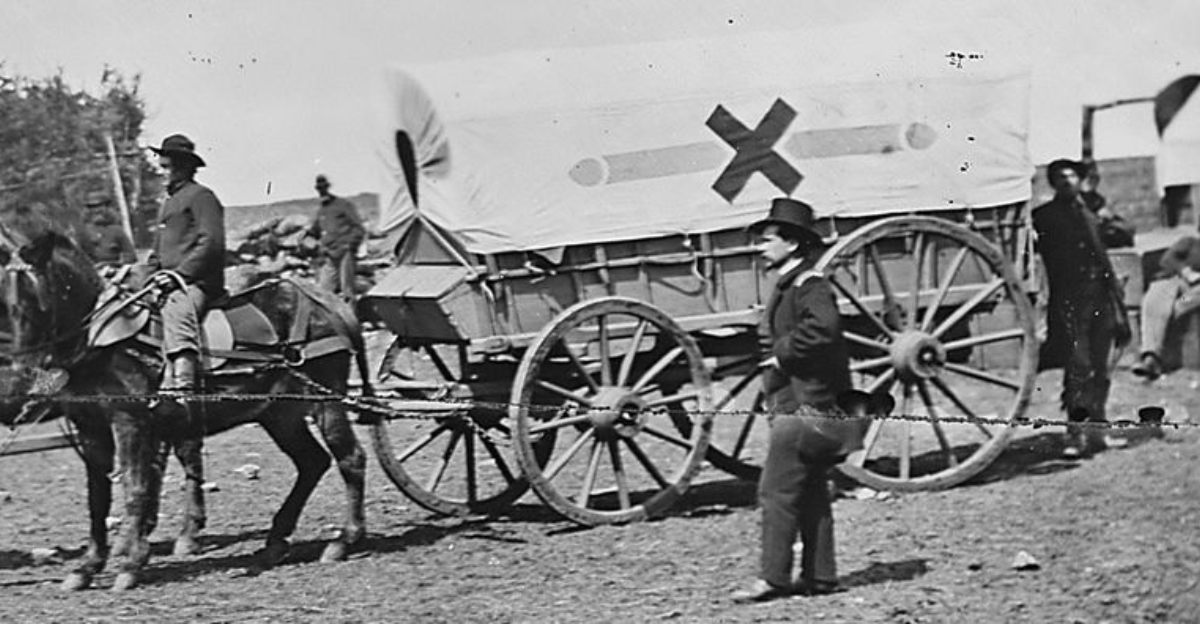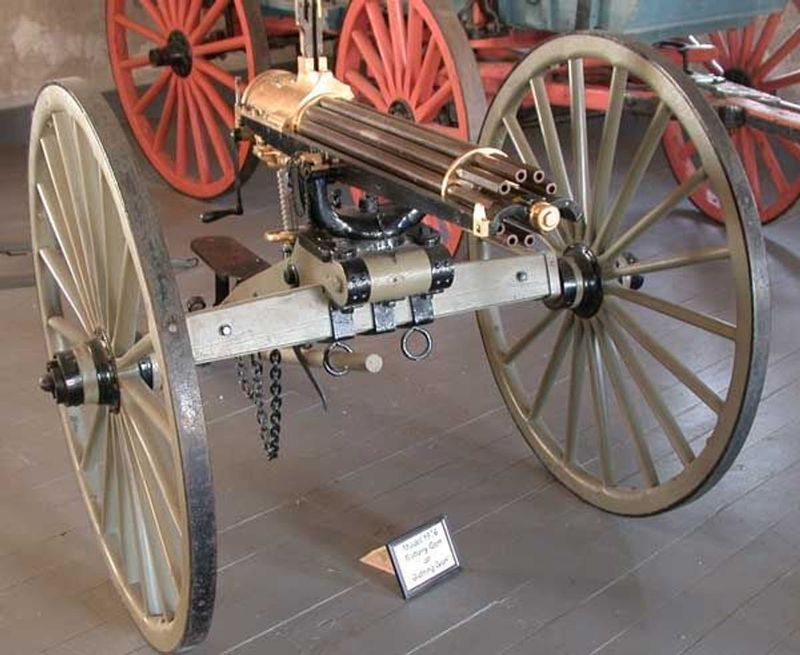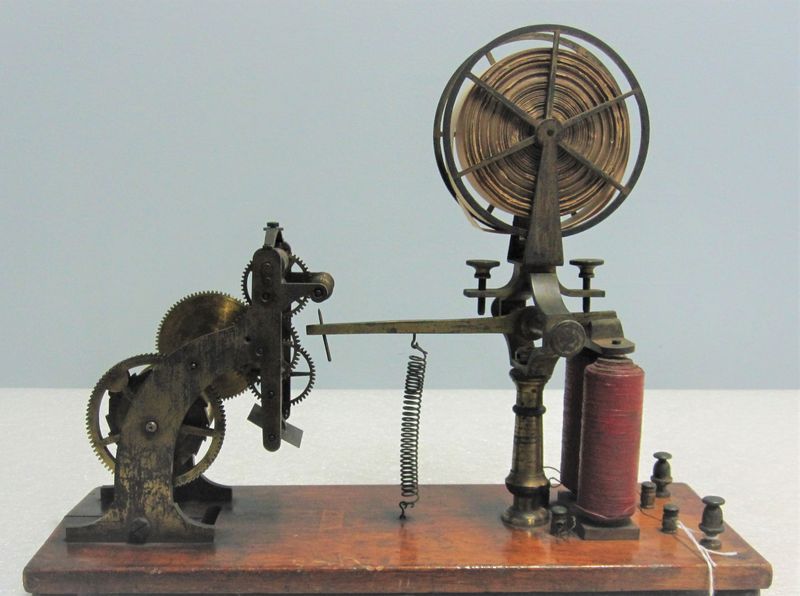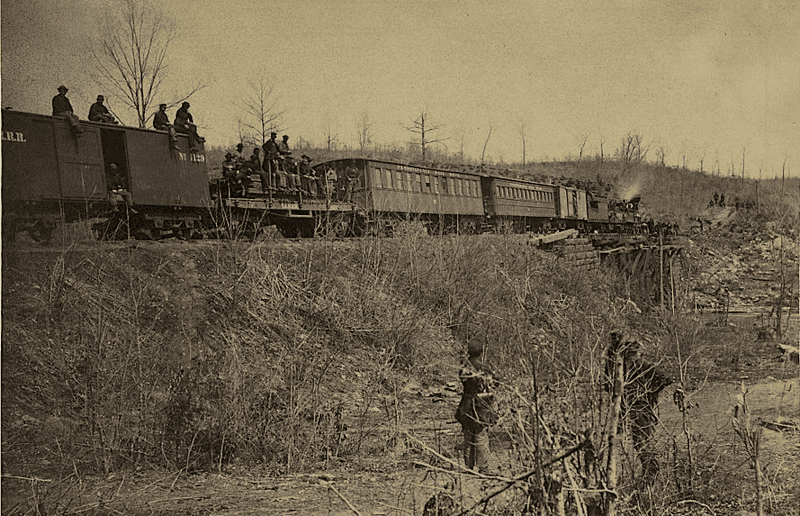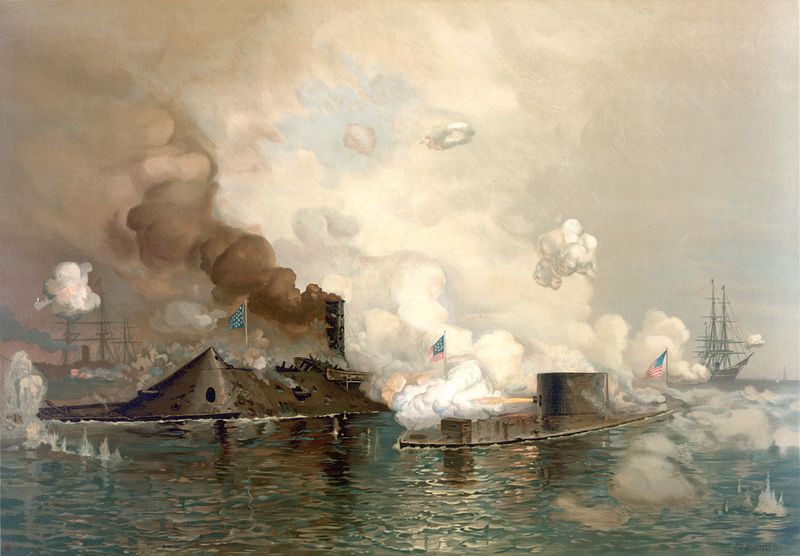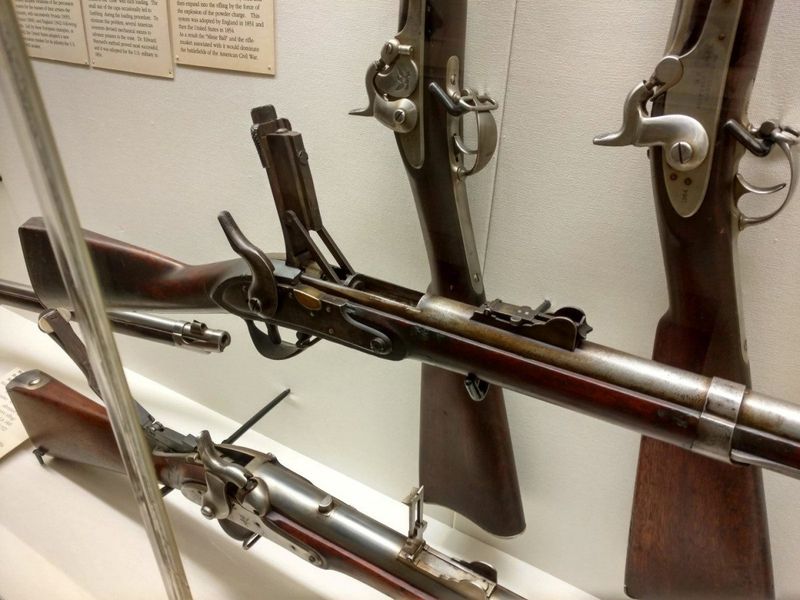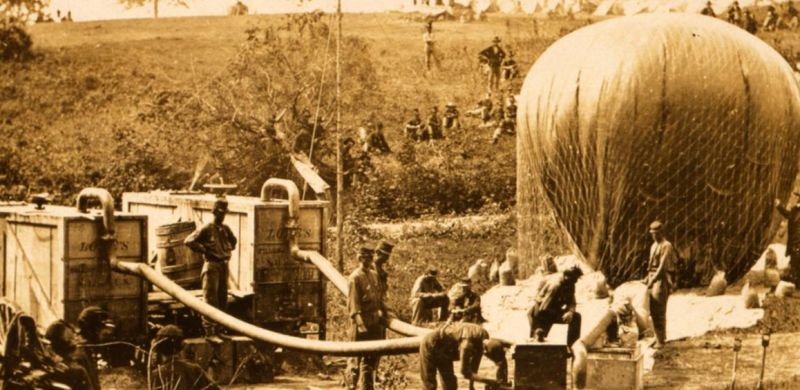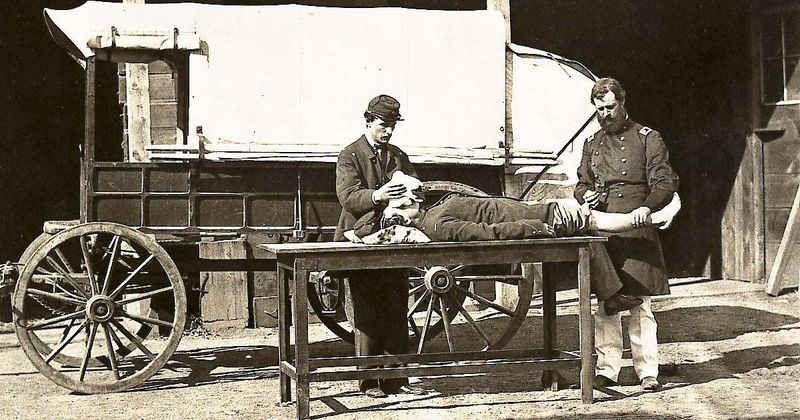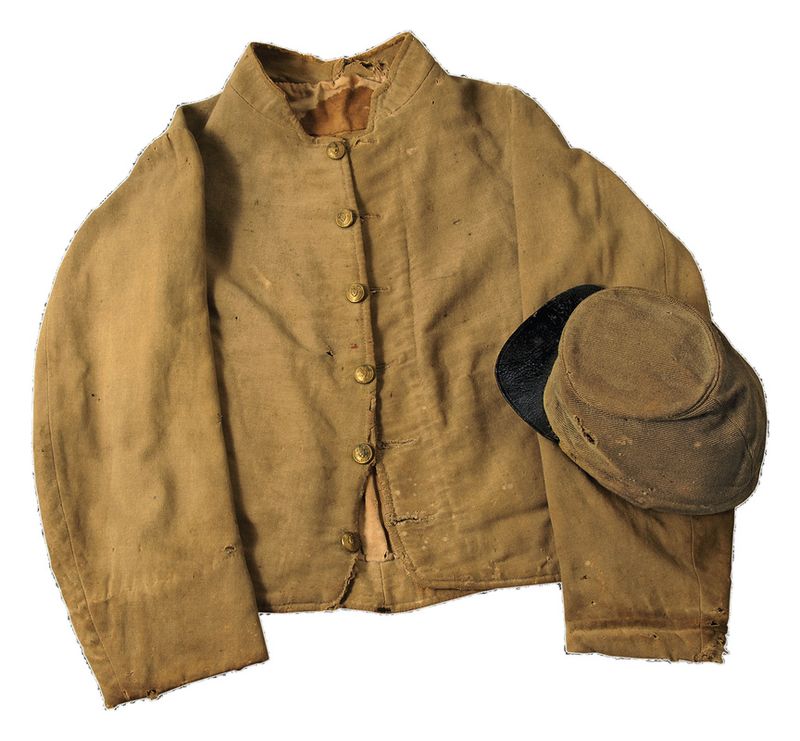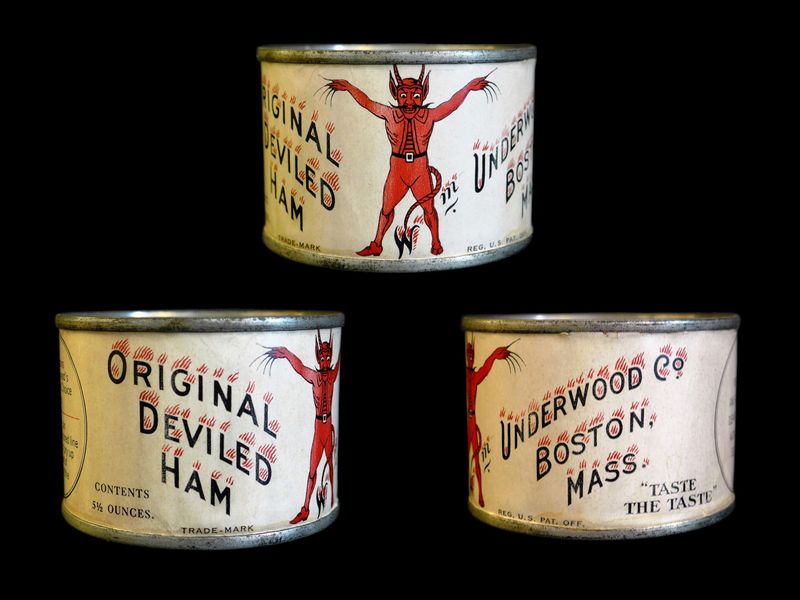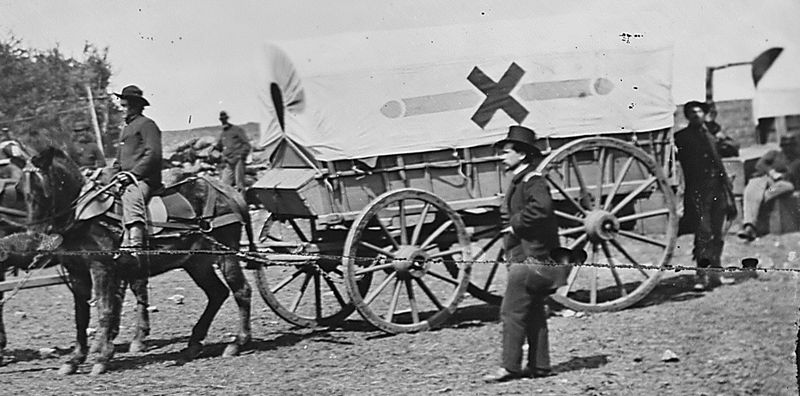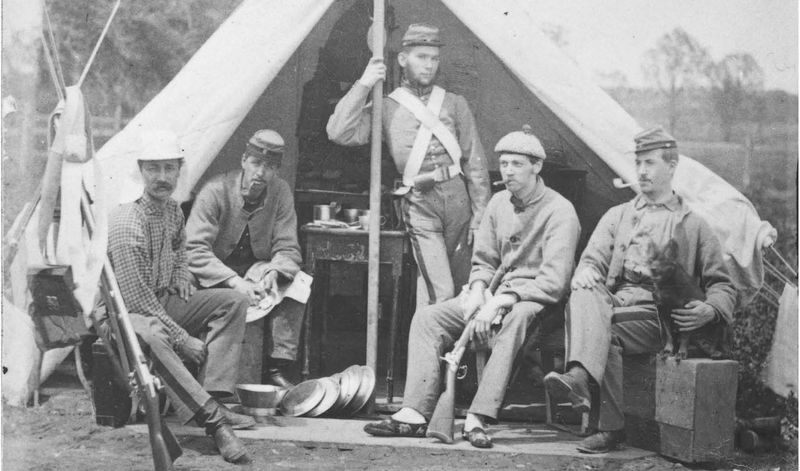The American Civil War was a period of profound technological innovation, with inventions that not only transformed warfare but also had lasting impacts on various aspects of society.
From weaponry to communication and medical practices, these innovations laid the groundwork for modern advancements. This blog post explores 12 key inventions from the Civil War era that have left a significant mark on the United States.
Each item is highlighted for its unique contribution and enduring influence, providing a window into the ingenuity that arose from a time of conflict and change.
1. The Gatling Gun
The Gatling Gun, invented by Richard Gatling, was a revolutionary weapon that changed the face of battlefield artillery in the 1860s.
Its design featured multiple barrels and a hand crank, allowing for rapid-fire capability. This innovation foreshadowed modern machine guns and significantly impacted military tactics.
Unlike earlier firearms, the Gatling Gun could fire hundreds of rounds per minute, offering a strategic advantage. Its introduction marked a shift in warfare, emphasizing the importance of technology in combat.
Though not widely used during the Civil War, its legacy endured, paving the way for future developments in automatic weaponry.
2. The Telegraph
The telegraph was a groundbreaking communication tool widely adopted during the Civil War, transforming how information was relayed on the battlefield. Invented by Samuel Morse, it allowed messages to be sent quickly over long distances using Morse code.
This technology became the backbone of American long-distance messaging, facilitating real-time communication between military leaders. The telegraph’s influence extended beyond the war, laying the foundation for modern telecommunications.
Its ability to provide timely information was crucial in making strategic decisions, showcasing its pivotal role in both military and civilian life.
3. Railroads as Military Tools
The use of railroads as military tools during the Civil War was a game-changer in logistics and transportation. Trains enabled the rapid movement of large numbers of troops and essential supplies, significantly impacting military strategy and operations.
This innovation reshaped American infrastructure, as railroads became vital arteries of the war effort. The ability to quickly transport resources where needed allowed for more efficient military campaigns.
After the war, the expanded railroad network continued to influence economic growth, transforming how goods and people moved across the country and cementing railroads’ place in American history.
4. Ironclad Warships
Ironclad warships were a naval innovation that signaled the end of traditional wooden fleets. The most famous clash, between the USS Monitor and the CSS Virginia, demonstrated their superior strength and durability.
These ships were armored with iron plates, making them formidable against conventional wooden vessels.
Ironclads marked the beginning of modern naval warfare, focusing on durability and firepower. They played a critical role in blockades and coastal assaults, proving that ships of the future would be built with metal.
This innovation extended beyond military use, influencing shipbuilding techniques worldwide.
5. The Minie Ball
The Minie Ball, a conical bullet design, was a significant advancement in firearms technology during the Civil War. Its accuracy and lethality were unmatched by earlier ammunition. The bullet’s design allowed it to expand when fired, engaging the rifling in the barrel and improving accuracy.
This innovation led to increased casualties, as soldiers could hit targets from greater distances with precision.
The Minie Ball’s deadly effectiveness highlighted the need for medical advancements in battlefield care. Its development paved the way for more precise and efficient firearms, influencing military tactics for years to come.
6. Breech-Loading Rifles
Breech-loading rifles represented a significant leap in firearm technology during the Civil War. Unlike traditional muzzle-loaders, these rifles allowed soldiers to load ammunition from the rear of the barrel, making reloading faster and more efficient.
This innovation altered battlefield tactics, as soldiers could maintain a higher rate of fire with increased safety. Breech-loading rifles remained in use well after the war, influencing the design of future firearms.
Their efficiency in combat situations underscored the importance of technological advancement in warfare, showcasing the evolution of military arms.
7. Aerial Reconnaissance (Balloons)
The use of hot air balloons for aerial reconnaissance by the Union Army’s Balloon Corps represented an innovative approach to gathering intelligence during the Civil War. These balloons provided a bird’s-eye view of enemy movements and battlefield layouts.
This early form of aerial surveillance allowed commanders to make informed strategic decisions. The Balloon Corps’ efforts highlighted the potential of aerial reconnaissance in military operations, a concept that would evolve with the advent of airplanes.
Their use demonstrated the strategic advantage of observing the battlefield from above, paving the way for future air-based intelligence gathering.
8. Field Anesthesia and Medical Advancements
The Civil War saw significant advancements in medical practices, particularly in the use of anesthesia and innovative techniques in triage and amputation. These developments were driven by the high number of battlefield casualties requiring immediate care.
Field hospitals became centers of medical innovation, with doctors pioneering methods to improve survival rates. The war accelerated the adoption of anesthesia, allowing for more humane surgeries.
These practices laid the foundation for modern emergency medical care, emphasizing the importance of efficient and compassionate treatment in crisis situations.
9. Standardized Clothing Sizes
The mass production of uniforms during the Civil War led to the creation of standardized clothing sizes. This innovation was necessary to efficiently outfit large numbers of soldiers and later influenced the burgeoning post-war clothing industry.
Before the war, clothing was typically custom-made, but standardized sizes allowed for quicker and more economical production. This approach revolutionized the garment industry, paving the way for ready-to-wear fashion.
The practice of using standardized sizes has had a lasting impact on how we produce and consume clothing, reflecting the practical needs that arose during wartime.
10. Canned Food and Food Preservation
The challenge of feeding large armies during the Civil War drove innovations in food preservation, particularly the development of canned food. This method allowed for long-lasting, transportable sustenance vital to military campaigns.
Canned food provided soldiers with a reliable food source, reducing spoilage and ensuring nutritional needs were met.
The techniques developed during the war laid the groundwork for the modern canned food industry, influencing how food is processed and stored today. This advancement was crucial in both military and civilian food supply chains, reflecting wartime ingenuity.
11. Military Ambulance Corps
The establishment of the Military Ambulance Corps during the Civil War revolutionized battlefield medical care by organizing the systematic evacuation of wounded soldiers. This innovation emphasized the importance of rapid medical intervention and transport.
The Ambulance Corps’ efforts laid the foundation for modern emergency medical services (EMS), highlighting the need for structured medical support in crisis situations.
Their work improved survival rates and showcased the value of organized medical logistics. Today, the principles of the Ambulance Corps continue to influence how emergency medical care is provided worldwide.
12. Photography as Wartime Documentation
Photography emerged as a powerful tool for documenting the realities of war during the Civil War. Pioneers like Mathew Brady captured haunting images of battlefields, soldiers, and the aftermath of conflict, bringing the war’s harsh realities to the public.
These photographs were among the first instances of photojournalism, providing an unfiltered view of war’s impact. The visual documentation helped shape public perception and historical understanding of the conflict.
Photography’s role in recording history became evident, underscoring its importance in capturing and preserving moments for future generations.
